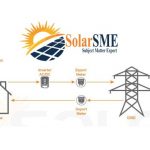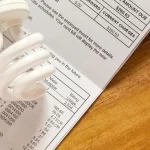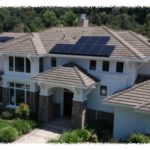Solar Array: Everything A Homeowner Needs to Know
With the installation of solar array, you can get clean energy and reduce your electricity bills. A solar array is a set of solar panels. These panels are connected together to generate electricity by capturing sunlight. Solar panels generate direct current, and with the integration of an inverter system, the direct current is transformed into an alternating current.
With this solar energy system, one can get the electricity that powers the houses or sent to the grid. There is more to learn about home solar systems, and this article will help you. By the end of this discussion, you will know everything a homeowner needs to know about solar array installation.

How does a solar array works?
A solar array is a set of solar panels linked together to meet the electricity demand. Solar panels are made with photovoltaic cells, which are further protected with glass and metal frames. These solar cells are mainly produced with thin semiconductor material such as silicon. The solar arrays have a longer time span of approximately 25 years. Here’s how solar panels in an array work to generate electricity:
Step 1: Initially, sunlight activates the solar cells in the array, which generate DC electricity.
Step 2: Once DC electricity is generated, it is transferred to a solar inverter that converts DC to AC electricity. This electricity is further used in homes.
Step 3: Finally comes the power consumption in which 120’140 volts of AC electricity is used with resistance. The rest is sent to the grid.

How to choose the location?
You have to choose the location of solar photovoltaic panels very carefully. More electricity is generated if the solar array faces south in the Northern hemisphere instead of west, north, or east. The rooftop is reliable for installing solar panels.
Also, if you have an open land with lots of sunlight, then it will also be a great option. For this, you can opt for ground mounts, but the angle should be perfect. Solar carports and gazebos are also common places for solar panel installation.
Size & Scale
The size is an essential factor to consider because it demonstrates the ability of solar panels to generate electricity. A home solar system has 20 solar panels, each with a capacity of 6 kilowatts. Or, you can have 15 solar panels of 400 W. As for the utility solar, it’s made with almost thousands of solar panels with a capacity of 1 megawatt or even more than this.
You need to understand your electricity consumption to understand the size of the solar array you need. For instance, if your monthly electricity consumption is 1000 kWh, you will need to have 14 to 21 solar panels. One more thing to know is the standard test conditions. Panels manufacturers rate their products after STC process. In addition, know the peak sun hours in your location because it will impact the size of the solar array and the number of solar panels you need.
Cost & Installation
On average, a complete home solar system can cost between $18,000 to $20,000 in the US. The per watt of solar installation mainly costs between $2.75 and $3.35. The cost of a solar energy system varies depending on the system size and energy needs.
Day by day, solar technology is evolving and making lives better in several ways. The below-mentioned points will help to understand why you need solar arrays:
Why You Need Solar Arrays?
Solar is a renewable energy source and helps in reducing greenhouse gases. This makes the environment healthier.
Another important reason to have solar arrays is that they reduce electricity bills and have benefits like federal solar tax credit.
By installing solar arrays, you can enhance your property value and get better energy security.
Solar arrays are durable and require less maintenance, which makes them a long-term investment.

Tips To Get Most Out of Solar Arrays
Installing solar panel arrays is indeed a wise choice and a profitable investment. Yet, it’s important to get the most out of your investment. Having a reliable battery storage solution is an advantageous option because this will be your electricity backup.
With a storage solution, you can have continuous electricity even during power outages. Moreover, the extra electricity generated by solar panels will be stored in batteries and can be used at night.
Conclusion
Conclusively, installing a solar panel array can provide you with benefits, but there are a few things that every homeowner should know. Initially, you have to know its cost, which mostly depends on the size of the solar array you need. It’s important to know your budget and the size of solar system you need.
Moreover, you need to select the location for solar array installation quite carefully. In short, choose the area with the highest sunlight exposure. If you want to get the most out of your solar array, make sure you connect a backup solution. This will ensure a continuous electricity supply.
Are you looking for an affordable solar installation near you? Thousands of happy customers chose SolarSME for their solar installation and you can, too. You can also Request a free quote now!





